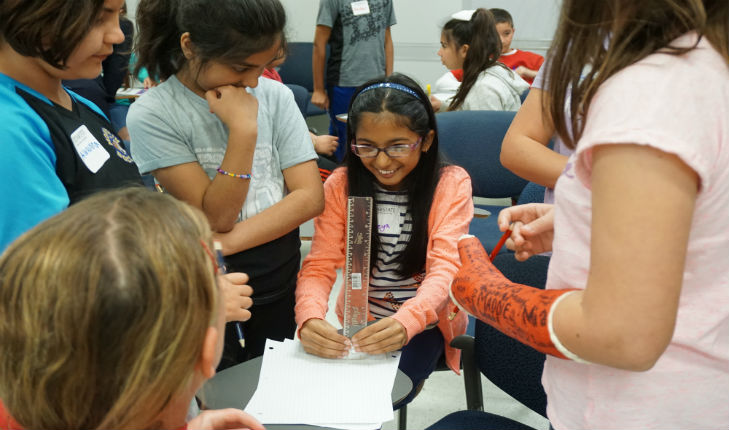Three California State University campuses in the San Joaquin Valley will work together on developing innovative teaching practices to improve student academic performance and retention in the science, technology, engineering and mathematics (STEM) fields.
Fresno State, CSU Bakersfield and Stanislaus State received a combined $2.5 million grant from the National Science Foundation to form a regional team of science and math experts, including lecturers and social-science researchers, to think outside the box when it comes to teaching STEM.
They will participate in intense creative-thinking “Ideas Labs” with nationally recognized math and science mentors to design a more interactive curriculum for lower-division chemistry and mathematics classes, which tend to be stumbling blocks for students seeking to graduate with a STEM degree. Then, the team will apply the practices to their coursework and center it around research on real-world problems in the San Joaquin Valley, starting with air pollution.
“This is unique and transformative in that it’s beyond one campus, serving an entire region,” said Dr. Christopher Meyer, dean of Fresno State’s College of Science and Mathematics. “It’s great to work with our partners in Bakersfield and Stanislaus on collaborative and interdisciplinary approaches to facilitate student success in STEM. We’re really excited about this, since it has the potential to benefit thousands of students in chemistry and math at the three CSU campuses.”
Each university will focus on a discipline that presents the greatest challenge for its own students. Fresno State will focus on chemistry and math. CSU Bakersfield will focus on chemistry, and Stan State will focus on math. Emerging best practices and innovations will be shared across the three campuses.
There is a critical need to increase the number of STEM graduates given the rapid growth of available, high-paying STEM jobs, Meyer said. It is estimated the United States will have to fill millions of STEM positions by 2025. At the same time, less than 40% of students who intend to major in STEM actually graduate with a degree, he said.
The project hopes to increase the pool of Hispanic, first-generation and low-income students with STEM degrees to better reflect the demographics of the region. All three campuses are Hispanic-Serving Institutions, as designated by the U.S. Department of Education. About 60% of the students on the three campuses are Pell-Grant eligible, meaning they come from low- and medium-income households, and about 70% are the first in their families to attend a four-year university.
Another goal is to help chemistry and math students feel a greater sense of belonging, a stronger sense of self-efficacy and identity, and feel connected to faculty and their peers.
“I am thrilled that the NSF is again partnering with Stan State, this time to help underwrite an extremely important program in our ongoing efforts to develop and promote STEM learning practices within our Hispanic student community,” said Stan State President Ellen Junn, who previously served as associate provost at Fresno State from 2008-12.
The work will go beyond the regional team of creators and their students by also engaging faculty-learning programs to share the practices developed with all instructors, especially part-time faculty who are typically not included in professional-development opportunities.
“In the CSU, we pride ourselves on great teaching, and this grant will enable our already-innovative teachers to share ideas and work synergistically across campuses,” said Kathleen Madden, dean of CSU Bakersfield’s School of Natural Sciences, Mathematics and Engineering. “We look forward to the positive effect this collaboration will have on student engagement and success in chemistry and mathematics courses.”
The project is slated to begin in October and will run for three years.





